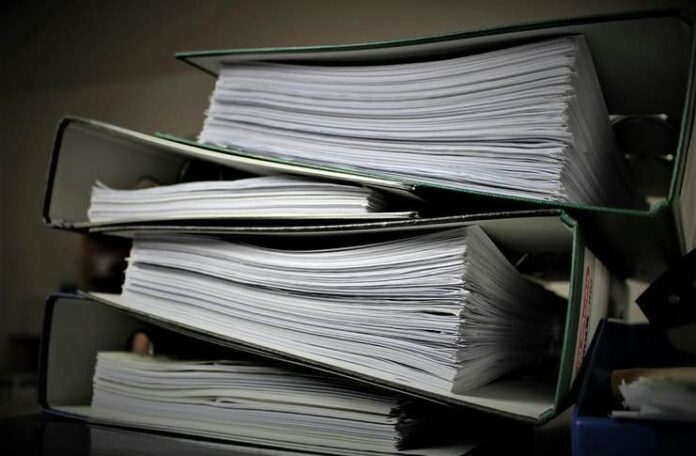
Decluttering your office often involves tackling a pile of documents that have accumulated over time. Properly disposing of these documents is crucial for protecting your personal information and maintaining organization. As part of our tips for running a business, here’s a guide to help you get rid of your documents efficiently and securely.
Use a Shredder for Sensitive Information
For documents containing personal or sensitive information, use a shredder. Shredding ensures that your information is irretrievable and helps prevent identity theft. Opting for professional shredding services can ensure that your sensitive information is securely and thoroughly destroyed, protecting you from potential identity theft and data breaches. If you’re one of our OFW followers in Brisbane, Australia, for example, you can easily search for document destruction in Brisbane. You’ll find a reliable service provider that specializes in this field.
If you decide to do it within your company, choose a shredder that meets your needs, whether it’s a basic model for occasional use or a heavy-duty shredder for frequent, high-volume tasks. Ensure that the shredded material is disposed of properly by recycling it according to your local guidelines.
Assess and Categorize Your Documents
Separate papers into categories such as personal, financial, medical, and legal. This step helps you understand which documents are essential to keep and which ones can be discarded. Important documents like tax returns or legal paperwork should be kept for a specified period according to legal requirements, while outdated bills or receipts can often be shredded or recycled.
Create a Document Retention Schedule
Develop a document retention schedule that outlines how long each type of document should be kept. For example, tax returns might need to be stored for seven years, while bank statements may only need to be kept for one year. Use this schedule to guide your decision-making process and ensure compliance with legal and regulatory requirements. Regularly review and update your retention schedule to account for changes in laws or personal circumstances.
Watch this video to learn more:
Use a Document Inventory System
Implement an inventory system to track and manage your documents more effectively. Label and record the location of each document or group of documents in a database or spreadsheet. This inventory system helps you quickly locate documents when needed and keeps track of what you have, reducing the likelihood of losing important paperwork. Periodically update the inventory to reflect any changes in your document storage or filing practices.
Digitize and Backup Important Documents
Consider digitizing important documents to reduce physical clutter. Scan and store digital copies of documents that you need to keep but don’t require a physical copy. Use reputable software or services for scanning and ensure that you back up your digital files on secure cloud storage or an external hard drive. This not only keeps your documents safe but also makes them easily accessible when needed.

Choose Reliable Scanning and Storage Solutions
Select high-quality scanning equipment and software that produce clear, legible digital copies of your documents. Ensure that the software you use offers features like OCR (Optical Character Recognition) to make text searchable and editable. For storage, opt for reputable cloud services that offer strong encryption and have a track record of reliability. Regularly review and update your storage plan to accommodate increasing amounts of data and to take advantage of any new security features or improvements.
Establish a Backup Routine
Implement a regular backup routine to ensure that your digital files are consistently protected. Schedule automatic backups to your cloud storage and external hard drive at intervals that suit your needs, whether daily, weekly, or monthly. Periodically test your backup system to verify that it is working correctly and that you can restore files when necessary. Having a reliable backup process in place minimizes the risk of data loss and ensures that you can recover your important documents in case of hardware failure or other issues.
Dispose of Non-Sensitive Documents Properly
For non-sensitive documents, recycling is a simple and eco-friendly option. Check local recycling guidelines to ensure that you are disposing of paper correctly. Some documents may not be suitable for recycling, such as those with heavy ink or laminate. In such cases, consider composting or contacting local waste management services for advice on proper disposal methods.
Consider Document Disposal Services
For large volumes of documents or businesses, consider using a professional document disposal service. These services offer secure shredding and recycling options and ensure that your documents are handled with confidentiality. Many companies provide on-site shredding, which allows you to witness the destruction of sensitive documents firsthand. This option is particularly useful for handling bulk or high-security documents.
Implement a Document Management System
Establishing a document management system can help you stay organized and prevent future clutter. Implement a system that categorizes and tracks important documents, both physical and digital. Set up regular intervals for reviewing and purging outdated documents to maintain an organized and secure filing system. An efficient document management system saves time and reduces the risk of keeping unnecessary paperwork.
Watch this video to learn more:
Choose the Right Document Management Software
Invest in document management software that suits your needs and integrates well with your existing tools. Look for features like automatic backups, user access controls, and search functionality to make finding and managing documents easier.
A good software solution should also support various file formats and provide robust security measures to protect sensitive information. Regularly update and maintain the software to ensure its effectiveness and compatibility with your evolving needs.
Create a Consistent Filing Structure
Develop a consistent filing structure for both physical and digital documents. Use clear and descriptive labels for folders and files to make it easy to locate and retrieve documents when needed. Establish guidelines for how documents should be named and categorized, and ensure that everyone involved follows these guidelines. Consistency in filing reduces confusion, speeds up document retrieval, and helps maintain an organized system over time.
Watch this for some more tips:
Educate Your Household or Team
If you’re managing documents for a household or a team, make sure everyone understands the importance of proper document disposal. Educate them on what should be kept, shredded, or recycled. Providing clear guidelines helps maintain consistency and ensures that sensitive information is handled correctly. This practice fosters a culture of security and organization.
Properly getting rid of documents involves more than just tossing them in the trash. By assessing, shredding, digitizing, recycling, and considering professional services, you protect your personal information and keep your space organized. Implementing a document management system and educating those around you further enhances your efficiency in document disposal. Follow these practical tips to handle document disposal securely and effectively.
Arun is an avid blogger and business expert. He’s been in business from the moment he finished school and hasn’t stopped growing ever since.




